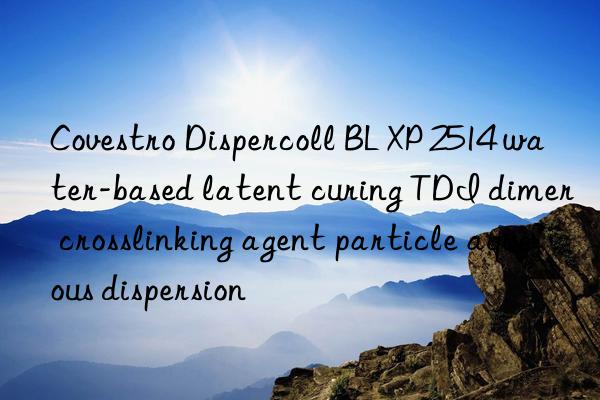|
<span styInitiate a crosslinking reaction. Adhesive properties such as heat resistance are a function of application conditions and the dispersion used.
Storage
Store in original airtight container.
Recommended storage temperature: 5 - 25°C.
Protection from frost, heat and foreign objects.
General Information: This product is temperature sensitive! Carbon dioxide is formed at temperatures >25°C, which can lead to dangerous pressure buildup in sealed airtight containers. Avoid transport and storage below freezing (0°C).
Product should only be stored in well-ventilated areas. The references to Section 7 of the Safety Manual must be followed.
Storage Time
Within four months of the date of shipment stated in the corresponding shipping document, the product will conform to the specifications or values stated in the "Specification or characteristic data" section above, as applicable, the product's Stored in full compliance with the storage conditions described and referenced in the "Storage" section above and otherwise handled with care.
A failure during the four-month period does not necessarily mean that the product no longer meets specifications or setpoints. However, it is recommended that such products be tested before using them if they still meet the specifications or set values. After the four-month period, Covestro makes no representations about the product, and the manufacturer is not responsible or liable for any failure of the product to meet specifications or set values after the four-month period.
Packaging
Plastic container, 18kg content; with pressure relief lid. Open type, closed loop with 200 kg content, with vent valve on the lid.
Containers must be shipped and stored upright with lids on top. The condition of containers and lids must be checked regularly.
Disposition
When handling Dispercoll BL XP 2514 or potentially reactive adhesive dispersions formulated with Dispercoll BL XP 2514, CO2 generation can lead to pressure in tightly sealed waste containers accumulation. Therefore, the NCO group of the TDI dimer should be destroyed by reaction with ammonia.
The following procedure for the elimination of NCO groups has proven effective in our laboratory:
Dispercoll BL XP 2514:
First determine that the total weight of the filled containers reaches the maximum value. 2/3 full. For 100pbw gross weight, add 20pbw ammonia solution (24% NH3). Stir the contents of the container. There will be slight warming for an hour. Airtight container can be discarded after cooling.
Latent reactive dispersion binder:
First determine that the total weight of the filled containers reaches the maximum value. 2/3 full. For 100pbw gross weight, add 5pbw ammonia solution (24% NH 3 ). Stir the contents of the container. There will be slight warming for an hour. Airtight container can be discarded after cooling. Unusable product residues must be disposed of in an incinerator according to local regulations. Industry specific waste codes from the European Waste Catalog (EWC) should be used. See Material Safety Data Sheet for details. Outside the areas covered by German packaging regulations, carefully emptied packages can be disposed of in local or industrial incinerators. Hazard labels must not be removed without first decontaminating the packaging.
Labeling and Legal Requirements
This product data sheet should only be used in conjunction with the latest version of the corresponding safety data sheet. Updating safety-related information in accordance with statutory requirements will only be reflected in the Safety Data Sheet, copies of which will be revised and distributed. Information on current classification and labelling, application and handling methods, and other safety-relevant data can be found in the currently valid Safety Data Sheets.
More info
This product is mainly used as a curing agent in coatings or adhesives. Handling of coatings or adhesives containing reactive polyisocyanates and residual monomeric TDI requires appropriate protective measures as mentioned in the safety data sheet. Therefore, these products may only be used in industrial or trade applications. They are not suitable for homework (DIY) applications.
|


 微信扫一扫打赏
微信扫一扫打赏

